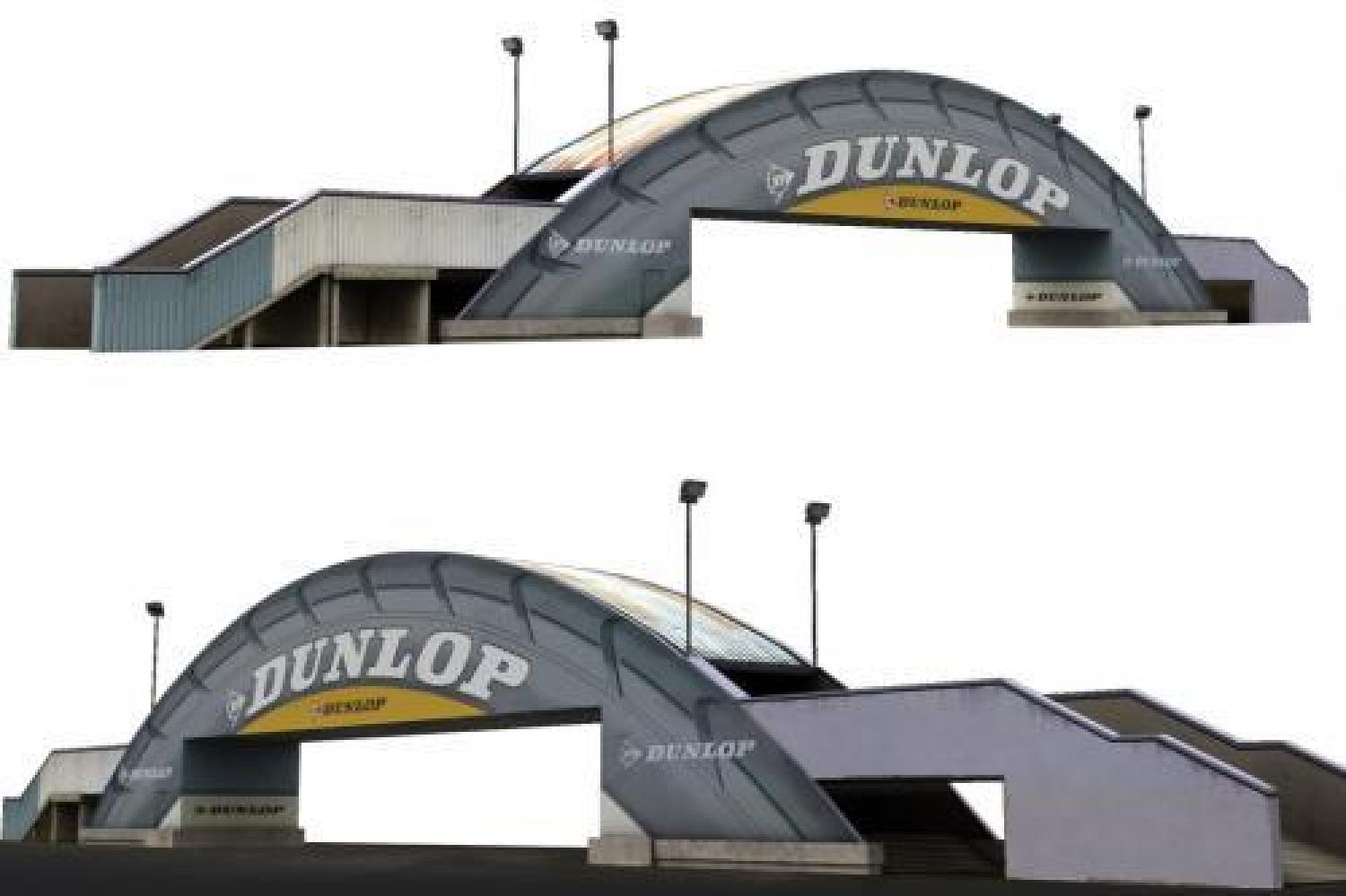Each year, pictures are taken thousands of times of this monument... and it has lasted for 90 years! The story of a historical publicity stunt.
|
1923 |
From the first race, Dunlop had built a bridge to allow spectators to move from the stands to chip stalls. |
|
|
|
|
|
1928 |
The metal footbridge begins to age. It is replaced by a monumental replica of the "Dunlop Fort" tyre which is of lasting appearance and which refers to the factory in Birmingham, Fort Dunlop, where tyres are manufactured. A legend is born! However, this structure is banned by the Automobile Club de l'Ouest, which prohibits advertising around the circuit. |
|
|
|
|
|
1948 |
The rules change after the Second World War, and Dunlop reinstalls a bridge 18 metres long. Made of metal and wood, it is located at the entrance of the curve at the end of the pit straight. |
|
|
|
|
 |
 |
 |
|
The first footbridge built in 1923 |
1950: the Cadillac de Ville coupé passes under the bridge |
The bridge has not changed position since 1965 |
|
|
|
|
|
1953 |
A second footbridge in the Dunlop colours is erected at the entrance of the Tertre Rouge corner. It will be replaced by a tunnel in 1979. |
|
|
|
|
|
1956 |
The giant tyre retains its position despite the work following the accident of Pierre Levegh. The bend takes the name of the "Dunlop Curve" and the tyre supplier uses its footbridge to launch its products: the "Fort" will be successively replaced by "SP Security", "SP Sport", "Competitive Spirit", "the Passion for the Future "... |
|
|
|
|
|
1965 |
The monument was moved to the top of the hill and the 24 Hours of 1966 shows the new location. |
|
|
|
|
|
1978 |
The new bridge can accommodate up to 1,350 spectators and withstand winds of over 200 km/h. The arch is 50 metres long, 13 metres high and weighs 70 tons. In 1988, Dunlop chose Le Mans to celebrate the centenary of the brand.
|
|
|
|
|
|
1992 |
The current version has hardly been altered since its last facelift. It has generated so much enthusiasm that other circuits have adopted it, such as Donington Park in England, Sugo in Japan and even the Paris-Bercy Karting race! |
|
|
|
|
-CHEVROLET-CORVETTE-C6-ZR1-SBA-1324A--SBA4720_l.jpg) |
 |
 |
Julien HERGAULT / ACO - Translated by Tony Light/ACO




-CHEVROLET-CORVETTE-C6-ZR1-SBA-1324A--SBA4720_l.jpg)


